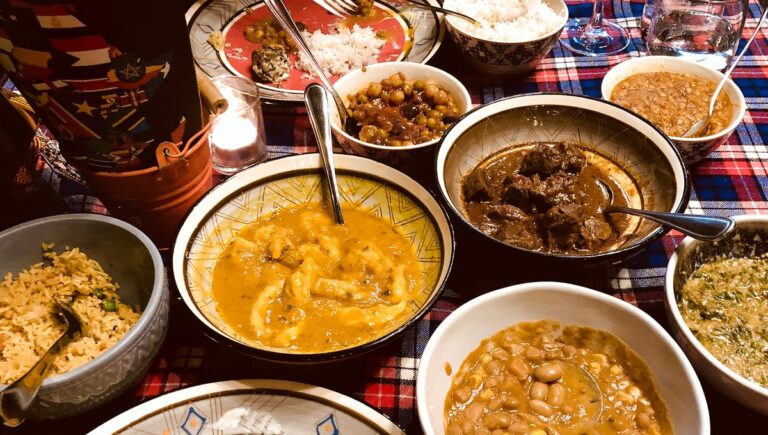Introduction: Côte d’Ivoire’s Culinary Landscape
Côte d’Ivoire is a West African country that boasts a rich and diverse culinary tradition. The country’s cuisine is a reflection of its geographic location and cultural heritage, incorporating influences from neighboring countries such as Mali, Burkina Faso, and Ghana. Côte d’Ivoire’s cuisine is characterized by its use of fresh ingredients, bold flavors, and unique spice blends.
Côte d’Ivoire’s cuisine is known for its use of starchy staples such as cassava, yams, and plantains. These ingredients form the base of many dishes and are often used as a substitute for rice or bread. Additionally, seafood is abundant in Côte d’Ivoire, with fresh fish, shrimp, and lobster being popular ingredients in many coastal dishes. The country’s cuisine is also heavily influenced by French colonialism, with many dishes incorporating French cooking techniques and ingredients such as butter, cream, and cheese.
North vs South: Key Regional Differences
Côte d’Ivoire is divided into five main regions: the North, South, East, West, and Central. Each region has its own unique culinary traditions, with distinct differences in ingredients, cooking techniques, and flavors. The North and South regions are perhaps the most different from each other, with the North being more influenced by Sahelian cuisine and the South by coastal cuisine.
Northern Cuisine: A Blend of Flavors
Northern cuisine in Côte d’Ivoire is heavily influenced by neighboring countries such as Burkina Faso and Mali. It is characterized by its use of grains such as millet and sorghum, as well as starchy staples such as yams and plantains. Northern dishes are often spicy and feature a blend of flavors such as peanut, ginger, and tamarind.
Southern Cuisine: Seafood and Spices
Southern cuisine in Côte d’Ivoire is heavily influenced by the country’s coastal location. It is characterized by its use of seafood, as well as a variety of spices and herbs. Southern dishes are often cooked in a tomato-based sauce and feature flavors such as garlic, chili, and lemongrass. Popular dishes in the South include grilled fish, shrimp stew, and seafood fritters.
Eastern Cuisine: Yams and Plantains
Eastern cuisine in Côte d’Ivoire is characterized by its use of starchy staples such as yams and plantains. Dishes in the East often feature a variety of sauces and soups, and are typically cooked over an open flame. Eastern cuisine is also known for its use of smoked fish and meat, which adds a unique flavor to many dishes.
Western Cuisine: Influences from Liberia and Guinea
Western cuisine in Côte d’Ivoire is heavily influenced by neighboring countries such as Liberia and Guinea. Dishes in the West often feature a blend of flavors such as peanut, ginger, and chili, and are typically cooked in a tomato-based sauce. Popular dishes in the West include peanut butter soup, grilled chicken, and rice with vegetables.
Central Cuisine: A Fusion of North and South
Central cuisine in Côte d’Ivoire is a fusion of Northern and Southern flavors. Dishes in the Central region often feature a blend of starchy staples such as yams and plantains, as well as seafood and other meats. Central cuisine is also known for its use of spices such as ginger, garlic, and chili, which add a unique flavor to many dishes.
Conclusion: A Diverse and Flavorful Cuisine
Côte d’Ivoire’s cuisine is as diverse as the country itself, with each region offering its own unique culinary traditions. From spicy Northern dishes to seafood-rich Southern cuisine, Côte d’Ivoire’s cuisine is a reflection of the country’s cultural heritage and geographic location. Whether you’re a fan of spicy stews, grilled fish, or hearty starchy staples, there’s something for everyone in Côte d’Ivoire’s flavorful cuisine.
References: Sources for Further Reading
- “Côte d’Ivoire Food and Drink.” Lonely Planet. https://www.lonelyplanet.com/cote-divoire/eating
- “Côte d’Ivoire: Food and Drink.” World Travel Guide. https://www.worldtravelguide.net/guides/africa/cote-divoire/food-and-drink/
- “Côte d’Ivoire Cuisine.” African Food Guide. https://africanfoodguide.com/cote-divoire-cuisine/

